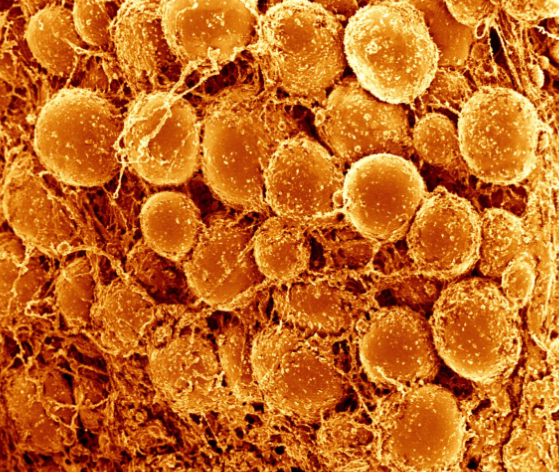Fat Implications for Health and Weight (Loss) Management
Unraveling the Dichotomy of Brown Fat and White Fat
Dichotomy of Brown Fat and White Fat

In the intricate landscape of human physiology, two types of fat play pivotal roles in shaping our health and susceptibility to various metabolic conditions: brown fat and white fat. Understanding the distinct characteristics of these adipose tissues and their interconnectedness with health outcomes such as diabetes, heart disease, obesity, and the challenge of weight loss provides valuable insights into metabolic health and potential therapeutic avenues.
Brown Fat vs. White Fat: The Basics
Brown Fat:
White Fat:
The Connection to Health Conditions
Diabetes
Research suggests that brown fat activation may improve insulin sensitivity and glucose metabolism, offering potential benefits for individuals with diabetes or at risk of developing the condition.
Excessive accumulation of white fat, particularly visceral fat, is strongly associated with insulin resistance and type 2 diabetes. Adipose tissue inflammation and the release of inflammatory cytokines contribute to insulin resistance and metabolic dysfunction.
Heart Disease
Brown fat activation has been linked to favorable lipid profiles, including decreased levels of triglycerides and LDL cholesterol, which are risk factors for heart disease.
Excess white fat, especially visceral fat, is associated with an increased risk of cardiovascular disease, hypertension, and atherosclerosis due to its role in promoting inflammation, oxidative stress, and dyslipidemia.
Obesity
Individuals with higher levels of brown fat activity tend to have lower body mass index (BMI) and body fat percentage, suggesting a protective role against obesity.
Obesity is characterized by excessive white fat accumulation, particularly visceral adiposity, which contributes to systemic inflammation, insulin resistance, and metabolic dysfunction.
Challenges to Weight Loss
Brown Fat Activation
Unlike white fat, which can be readily mobilized for energy storage, brown fat activation is more challenging. Factors such as age, sex, genetics, and environmental temperature influence brown fat activity.
Strategies to enhance brown fat activity include cold exposure, exercise, certain dietary compounds, and pharmacological interventions targeting brown fat thermogenesis.
White Fat Accumulation
White fat accumulation, especially visceral fat, is notoriously resistant to traditional weight loss interventions, making sustained weight loss challenging for many individuals.
Lifestyle modifications focusing on diet, physical activity, stress management, and sleep hygiene are essential for promoting healthy weight management and reducing white fat accumulation.
Conlusion
Brown fat and white fat represent two distinct yet interconnected aspects of adipose tissue biology, with profound implications for metabolic health and disease risk. While brown fat activation holds promise for improving metabolic parameters and mitigating obesity-related complications, addressing white fat accumulation remains a cornerstone of effective weight management and metabolic health promotion. By unraveling the complexities of brown and white fat biology and exploring innovative therapeutic approaches, we can pave the way for novel strategies to combat diabetes, heart disease, obesity, and other metabolic disorders, ultimately enhancing overall health and well-being.
As such, incorporating tea or coffee or having several herbs combinations drink into a healthy lifestyle may complement overall efforts to support metabolic health and potentially enhance brown fat function.However there is a convenient way for that. Check at this link or below link. You might discover that weight loss challenge is less risky and easier than you might think.
